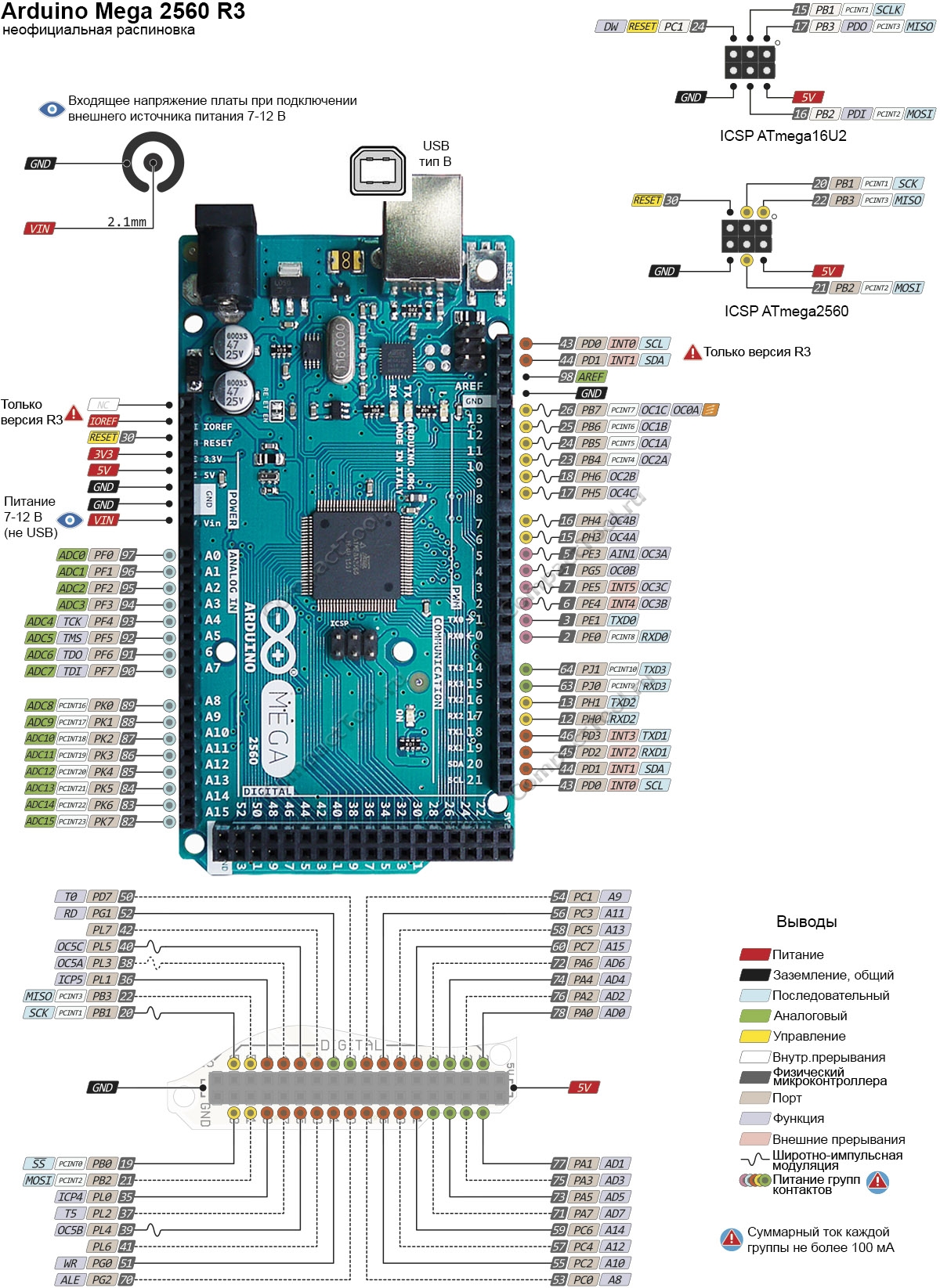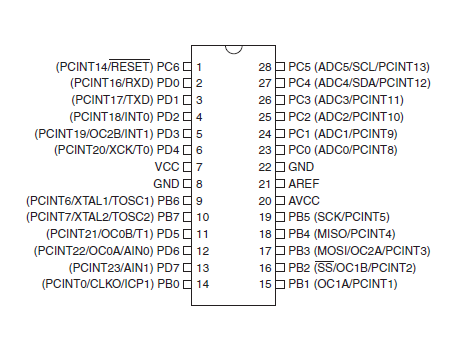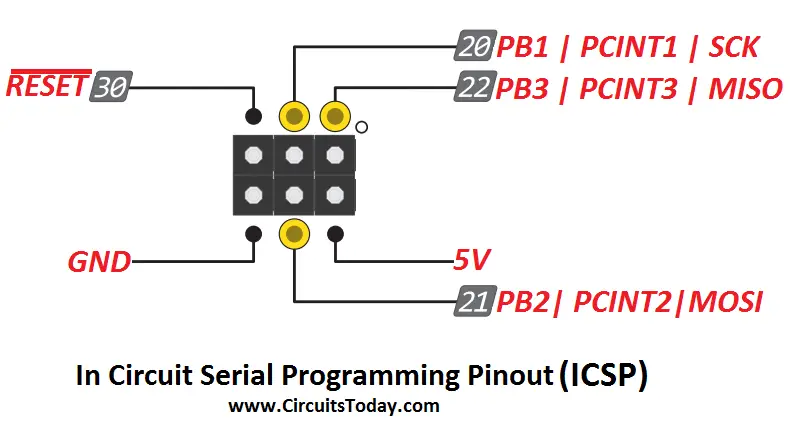
- ARDUINO MEGA PINOUT VECTOR HOW TO
- ARDUINO MEGA PINOUT VECTOR SERIAL
- ARDUINO MEGA PINOUT VECTOR SOFTWARE
This is the most important part of this DIY-project.

ARDUINO MEGA PINOUT VECTOR SERIAL
The Quick Disk itself is a rather simple serial data stream provider unit, it need no special emulation other than reading and writing data streams to and from the SD-card.Ī lot of the code is borrowed from mz800emu-project by Michael Hucik. It is the Z8440 SIO that needs to be emulated here. The original Quick Disk interface consist mainly of an address decoder and one Z8440 SIO chip. It is based on an Arduino Mega with an ethernet shield with SD-card, but you can adapt it to any Arduino and any SPI-enabled SD-card “shield”. This page explains how you can put together an SD-card based Quick Disk emulator with simple means.Īll components are readily available on eBay (as of late 2016), and can be put together on a breadboard, vero/perf board or even piggybacked on an Arduino. If you experience issues with your controller you can set slower modes.An Arduino-based QuickDisk emulator for the MZ-800 LaserGRBL claim to be faster than any others gcode streamer. Unfortunately not all hardware support all this speed. Sometime could be useful with electrical noise on USB/serial line. RepeatOnError: is the same of Synchronous but add the feature to repeat command if grbl report error (max 3 times).Synchronous send one command, wait for the complete execution and response (either ok or error) then send the next command. Synchronous: implement the “ simple-send-response” mode.Buffered : implement the “ character-counting” streaming mode, as documented in grbl reference. Buffered is more optimized since it send more than one command to grbl/arduino queue preventing dead times.

Read WiFi with ESP8266 for more information and instruction. LaserGRBL can connect via standard USB/Serial protocol but also via WebSocket or Telnet using a small WiFi module that act as bridge. If “Laser Mode” is enabled in your hardware please check this flag, so LaserGRBL will render G0 movement correctly, also with external generated gcode files. If you have “Laser Mode” enabled in your arduino, all the G0 rapid movement will be executed with laser turned off. Starting from GRBL v1.1 there is a new feature of GRBL called “Laser Mode”. If your Laser does not support power modulation via ttl-pwm with S code, but only ON-OFF operation by M3-M5, please uncheck this flag.Īll LaserGRBL feature that require power modulation will be hidden, and laser control will be done only via M3-M5 instead of S command. Other firmwareĮngraver based on Ruida, Mach3, Benbox etc are not supported by LaserGRBL. (tested with USB cable only, no WiFi support). LaserGRBL implement a sort of emulation of this protocol but their protocol is buggy and undocumented, so expect issue. This engraver uses a non-grbl compatible protocol and only work with their VigoWork software. In mid-2020 Vigotec has released a new model L7X with WiFi connection. It is assumed that LaserGRBL is able to communicate with Marlin, but the gcode generated by LaserGRBL could be not 100% compatible. Marlin firmware support is in a very early stage. For more information about usage with smoothie please see this page. LaserGRBL also have an experimental support for Smoothieboard with smoothie firmware. This includes a lot of commercial and DIY laser engraver/cutter and CNC. LaserGRBL is designed to talk with control board based on Arduino Uno/Nano and GRBL firmware. However is still useful to properly set up some information that LaserGRBL can not know about your hardware. Given its simplicity, LaserGRBL avoids as much as possible confusing you with so many configurations.

Italian version: Configurazione Grbl ITA LaserGRBL configuration

Here is a guide for GRBL configuration: Grbl Configuration ENG
ARDUINO MEGA PINOUT VECTOR SOFTWARE
This software is called GRBL, and needs to be configured through special commands or through a convenient configuration window available on LaserGRBL. The heart of a laser marker is hidden in its control board, on which there is a small chip on which runs a software capable of transforming the commands it receives from LaserGRBL (which in jargon are called g-code commands) into the right impulses to move the motors and to control the laser.
ARDUINO MEGA PINOUT VECTOR HOW TO
Before you get started, there are a few things you should know about your engraver and how to set it up to get the most out of your jobs.


 0 kommentar(er)
0 kommentar(er)
